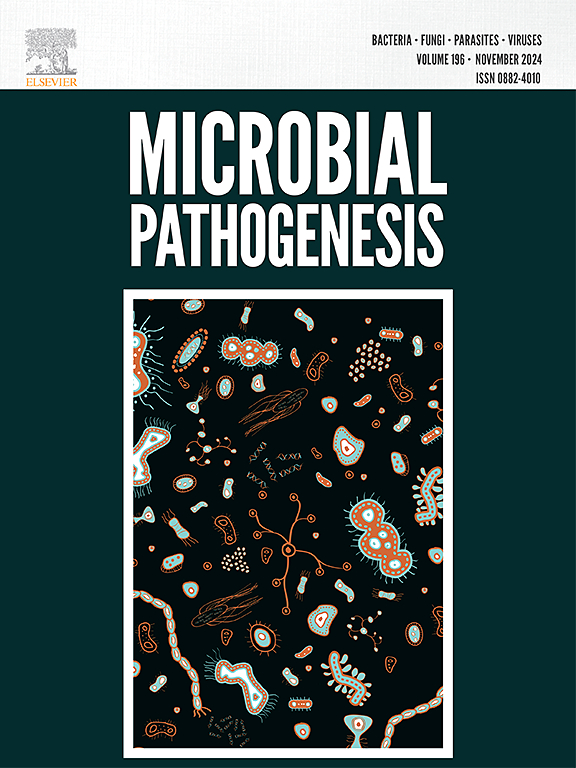Recent insights into potato dry rot an emerging Disease: Focusing on pathogen diversity, host-pathogen interactions, and management strategies
IF 3.5
3区 医学
Q3 IMMUNOLOGY
引用次数: 0
Abstract
Nowadays, global food safety and security are major concerns to mitigate global hunger. As, the world's population rising at an alarming rate and is expected to reach 10 billion by 2050, agriculturists have great responsibilities to grow more food from limited land. Crops are affected by several biotic and abiotic stresses in the field as well as during storage, this situation is drastic in developing countries. Potato belongs to the Solanaceae family, is considered a promising staple vegetable crop. To address the major issue of food safety and security, potatoes can be considered as a crucial non cereal food crop to combat this problem, as they can be grown under field conditions, and soilless medium (hydroponically, and aeroponically). The potato crop is also affected by various biotic stresses in both field and post-harvest conditions, significantly deteriorating its qualitative and quantitative yield. Among the biotic stresses, Fusarium dry rot (FDR) incited by the Fusarium species complex is considered a major problem in the present scenario. Dry rot of potato causes drastic quality and yield loss in cold stores. Moreover, Fusarium spp., producing mycotoxins like trichothecenes that contribute to the disease development. Fusarium spp. utilizes enzymes like pectinases and cellulases to break down plant cell walls, facilitating invasion and colonization. Therefore, implement crop rotation, use disease-resistant potato varieties, practice good sanitation, and employ fungicides to manage potato dry rot disease would be beneficial. Therefore, there is an urgent need to study the fungal species involved, pathogenicity, and to find the best management strategies for sustainable potato production. Although some reports on FDR of potato have been published previously, many recent studies have since offered new insights into diagnostic techniques, mycotoxin detection and quantification, and management strategies. Therefore, this review aims to integrate these recent findings, offering an updated outlook on FDR considering emerging research. Our objective is to provide a timely synthesis of the latest research developments that were not covered in previous reviews, making this article a valuable and necessary contribution to the agricultural field.

马铃薯干腐病是一种新兴疾病:关注病原菌多样性、寄主-病原菌相互作用和管理策略。
当前,全球食品安全和保障是缓解全球饥饿的主要问题。随着世界人口以惊人的速度增长,预计到2050年将达到100亿,农业学家肩负着从有限的土地上种植更多粮食的重大责任。作物在田间和储存期间受到几种生物和非生物胁迫的影响,这种情况在发展中国家尤为严重。马铃薯属于茄科,被认为是一种很有前途的主要蔬菜作物。为了解决食品安全和保障的主要问题,马铃薯可以被认为是解决这一问题的关键非谷类粮食作物,因为它们可以在田间条件下和无土培养基(水培和气培)下种植。马铃薯作物还受到田间和收获后条件下各种生物胁迫的影响,其质量和数量产量显著下降。在生物胁迫中,由镰刀菌群引起的镰刀菌干腐病被认为是目前的主要问题。马铃薯干腐病在冷库中造成严重的品质和产量损失。此外,镰刀菌,产生真菌毒素,如毛霉烯,有助于疾病的发展。镰刀菌利用果胶酶和纤维素酶等酶分解植物细胞壁,促进入侵和定植。因此,实行轮作、选用抗病马铃薯品种、搞好卫生、使用杀菌剂防治马铃薯干腐病是有益的。因此,迫切需要对病害种类、致病性进行研究,寻找马铃薯可持续生产的最佳管理策略。虽然以前已经发表了一些关于马铃薯镰刀菌干腐病的报道,但最近的许多研究为诊断技术、霉菌毒素检测和定量以及管理策略提供了新的见解。因此,本综述旨在整合这些最新的发现,提供枯萎病干腐的最新前景考虑到新兴的研究。我们的目标是提供一个及时的综合最新的研究进展,没有在以前的评论,使这篇文章对农业领域有价值的和必要的贡献。
本文章由计算机程序翻译,如有差异,请以英文原文为准。
求助全文
约1分钟内获得全文
求助全文
来源期刊

Microbial pathogenesis
医学-免疫学
CiteScore
7.40
自引率
2.60%
发文量
472
审稿时长
56 days
期刊介绍:
Microbial Pathogenesis publishes original contributions and reviews about the molecular and cellular mechanisms of infectious diseases. It covers microbiology, host-pathogen interaction and immunology related to infectious agents, including bacteria, fungi, viruses and protozoa. It also accepts papers in the field of clinical microbiology, with the exception of case reports.
Research Areas Include:
-Pathogenesis
-Virulence factors
-Host susceptibility or resistance
-Immune mechanisms
-Identification, cloning and sequencing of relevant genes
-Genetic studies
-Viruses, prokaryotic organisms and protozoa
-Microbiota
-Systems biology related to infectious diseases
-Targets for vaccine design (pre-clinical studies)
 求助内容:
求助内容: 应助结果提醒方式:
应助结果提醒方式:


